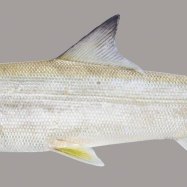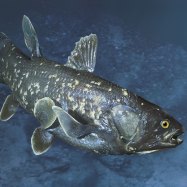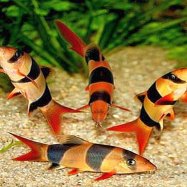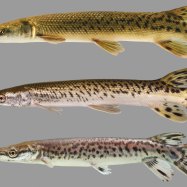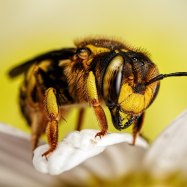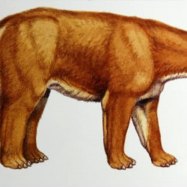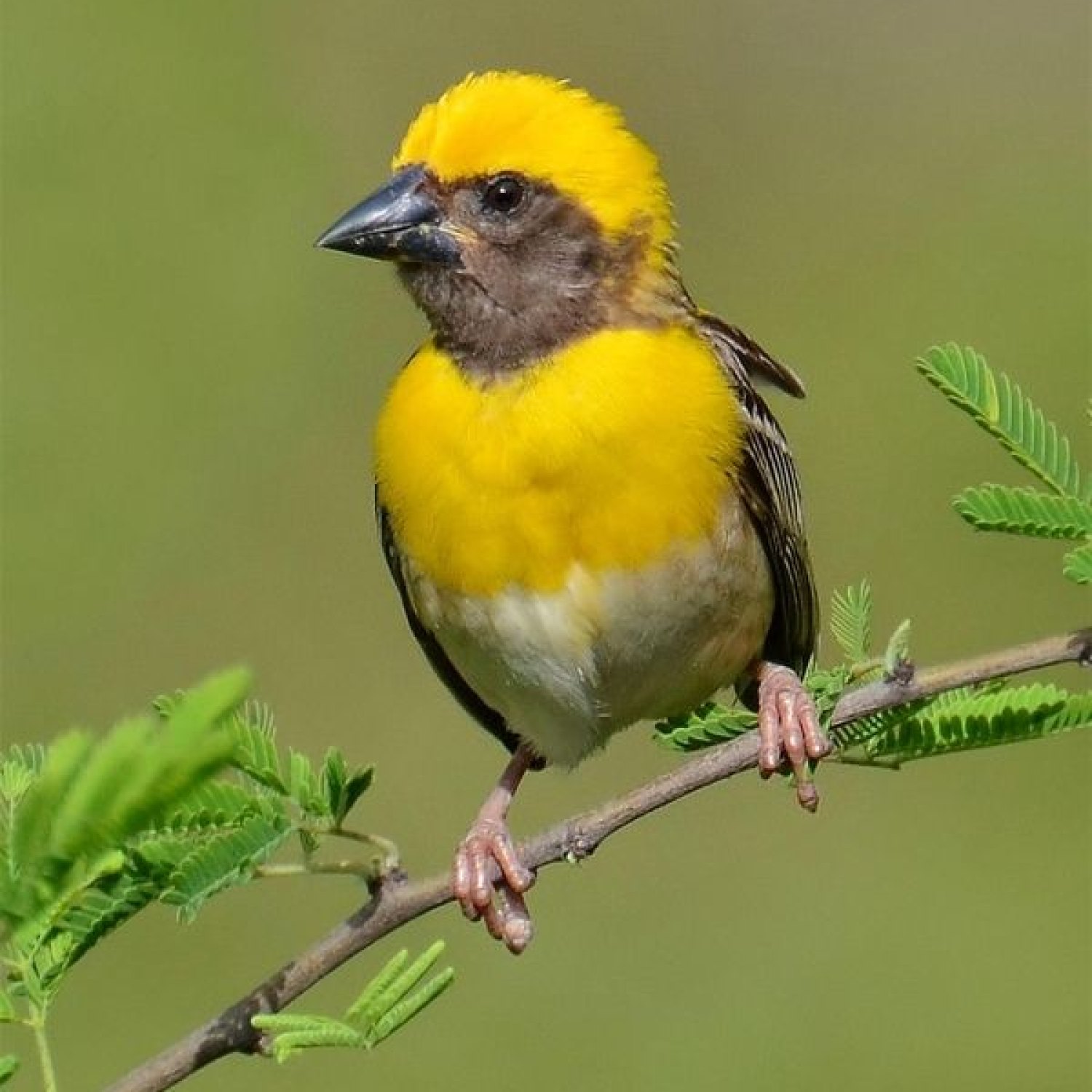
Baya
15-20 cm
The Baya bird, also known as the weaver bird, is a common sight in both rural and urban areas of India. Measuring between 15-20 cm in length and belonging to the Ploceidae family, this small and compact bird is known for its beautifully woven nests.
Animal Details Summary:
Common Name: Baya
Kingdom: Animalia
Habitat: Wetlands, grasslands, crop fields
The Fascinating Baya: A Colorful Bird of the Indian Subcontinent
From the lush wetlands to the bustling cities, the Baya bird can be spotted all over the Indian subcontinent. This beautiful bird, with its distinctive yellowish-brown coloration and small, compact body shape, is a common sight in rural and urban areas of India.But beyond its outward appearance, the Baya has many interesting and unique features that make it a standout among other avian species. In this article, we will delve into the details of this charming bird, exploring its scientific classification, habitat, feeding habits, distribution, and other notable attributes Baya.
The Baya's Scientific Classification
The Baya, scientifically known as Ploceus philippinus, belongs to the Animalia Kingdom, Chordata Phylum, and Aves Class. Its scientific name is derived from the Greek word "ploceus" meaning "plaited," referring to its intricate woven nests, and "philippinus" after the Philippines where it was first described.This small bird falls under the Order Passeriformes, also known as "perching birds," which includes over half of all living bird species. Within this order, the Baya belongs to the Ploceidae family, which comprises weaverbirds, and their allies, found mainly in Africa and Asia.
A Widespread Habitat
The Baya is a highly adaptable bird and can be found in various habitats, including wetlands, grasslands, and crop fields. It thrives in areas with a mix of water sources, tall grasses, and trees, making the Indian subcontinent an ideal location for their habitat.In rural settings, they can be found nesting on trees, while in urban areas, they often build their nests on streetlights, electrical wires, and buildings. Despite the rapid urbanization and deforestation in the region, the Baya has successfully adapted to the changing landscape, making it a commonly spotted bird in both rural and urban areas.
Omnivorous Diet
Being omnivorous, the Baya's diet consists of a variety of foods, including insects, grass seeds, grains, and fruits Betta Fish. In the wild, they are known to forage in groups, searching for food on the ground or in the grass. In urban areas, they have adapted to feed on scraps and leftovers from humans, making them known as "city cleaners."Their diet is not only vital for their survival but also plays a significant role in the ecosystem by helping control insect populations, pollinating flowers, and dispersing seeds.
A Distinctive Distribution
The Baya bird is endemic to the Indian subcontinent, meaning it is found nowhere else in the world. Their range extends from Pakistan in the west to Bangladesh in the east and covers the entire Indian Peninsula, including Sri Lanka.Within this region, they are prevalent in wetlands such as mangroves, marshes, and swamps, as well as grasslands and agricultural fields. During the breeding season, their population increases significantly, and they can be found in large numbers in a single area.
A Proud Symbol of India
The Baya bird is more than just a common sight in India; it is a proud national symbol. In 1963, this bird was declared the National bird of India and is featured on the new 10-Rupee currency note. Its significance in Indian culture and history dates back centuries, with references in ancient Indian texts as a symbol of love and loyalty.Additionally, the Baya is also featured in Indian Folklore and has been immortalized in paintings, songs, and poems. In recent years, efforts have been made to conserve this beloved bird and protect its habitat, further solidifying its importance in Indian culture.
A Vibrant Display of Colors
The Baya bird's most striking feature is undoubtedly its bright yellowish-brown coloration. This is more pronounced in males, with their vibrant yellow crown, breast, and front, while females have a duller coloration. Along with its yellow feathers, it also has a black and white head pattern, which makes it stand out even more.The reason behind the vibrant coloration is to attract potential mates during the breeding season, where males perform elaborate courtship displays to attract females. This is also a form of communication within the flock, where bright colors signify dominance and attract a mate.
A Small and Compact Body
The Baya bird has a small and compact body, measuring about 15-20 cm in length and weighing approximately 15-25 g. Its wingspan is around 5-8 cm, making it a relatively small bird compared to others in the Passeriformes order.Despite its small size, the Baya is known for its impressive construction skills, specifically its ability to weave intricate nests. Male Baya birds construct these nests using grass, leaves, and twigs, and their impressive weaving techniques often leave onlookers in awe. These nests are not only aesthetically pleasing but are also functional, providing protection from predators and harsh weather.
A Threatened Species
Despite its widespread distribution and cultural significance, the Baya bird is facing numerous threats, primarily due to the loss of its natural habitat. Urbanization and industrialization have resulted in the clearing of wetlands and grasslands, leaving the Baya with fewer areas to nest and forage.Additionally, excessive use of pesticides in agricultural fields has also adversely affected their population, as it kills off their food supply. Another major threat is the illegal trade of these birds, where they are captured for their beautiful feathers and used in decorations or sold as pets, leading to a decline in their numbers.
A Call for Conservation
In recent years, several conservation efforts have been made to protect the Baya's habitat and population. These include creating awareness about the bird's importance, implementing laws to prevent illegal trade and habitat protection measures.One such effort is the Baya weaver conservation project, where volunteers work with local communities to construct artificial nests and maintain the habitat to encourage the birds to thrive. These efforts have proved successful, and there has been an increase in the Baya bird's population in some regions.
Conclusion
In conclusion, the Baya bird is a fascinating and unique species that holds significant cultural importance in India. Its striking coloration, impressive weaving skills, and adaptable nature make it a standout among other bird species. However, with the constant threat to its habitat and population, it is crucial to continue with conservation efforts and protect this beautiful bird for generations to come. So, the next time you spot a Baya bird, take a moment to appreciate its beauty and significance in the Indian subcontinent.

Baya
Animal Details Baya - Scientific Name: Ploceus philippinus
- Category: Animals B
- Scientific Name: Ploceus philippinus
- Common Name: Baya
- Kingdom: Animalia
- Phylum: Chordata
- Class: Aves
- Order: Passeriformes
- Family: Ploceidae
- Habitat: Wetlands, grasslands, crop fields
- Feeding Method: Omnivorous
- Geographical Distribution: Indian subcontinent
- Country of Origin: India
- Location: Rural and urban areas of India
- Animal Coloration: Yellowish-brown
- Body Shape: Small and compact
- Length: 15-20 cm
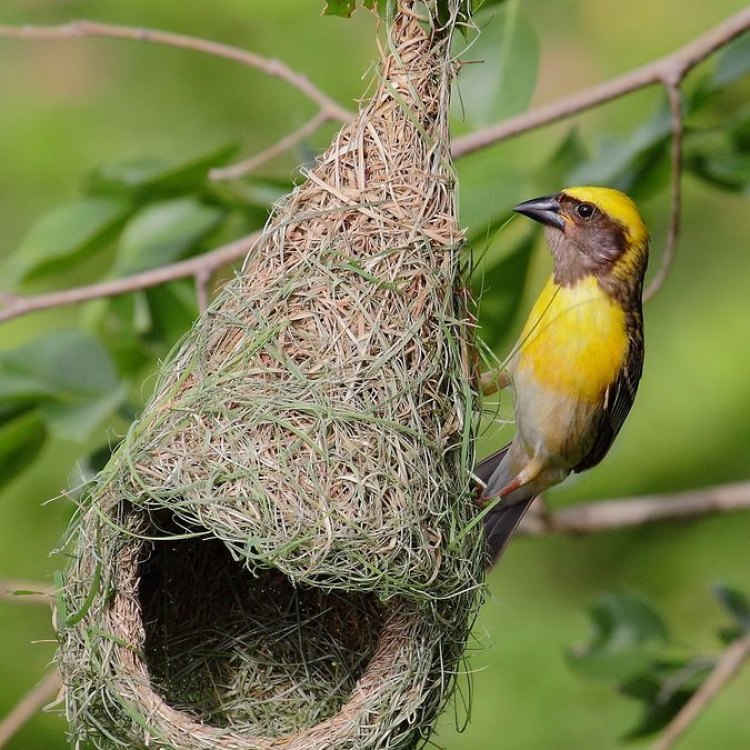
Baya
- Adult Size: Small
- Average Lifespan: 3-6 years
- Reproduction: Monogamous
- Reproductive Behavior: Builds intricate nests
- Sound or Call: Complex and melodious songs
- Migration Pattern: Resident
- Social Groups: Colonial
- Behavior: Active and sociable
- Threats: Habitat loss, captured for the pet trade
- Conservation Status: Least Concern
- Impact on Ecosystem: Seed dispersal
- Human Use: Popular as a pet bird
- Distinctive Features: Long, pointed beak
- Interesting Facts: Male Baya birds build elaborate nests to attract females.
- Predator: Snakes, birds of prey
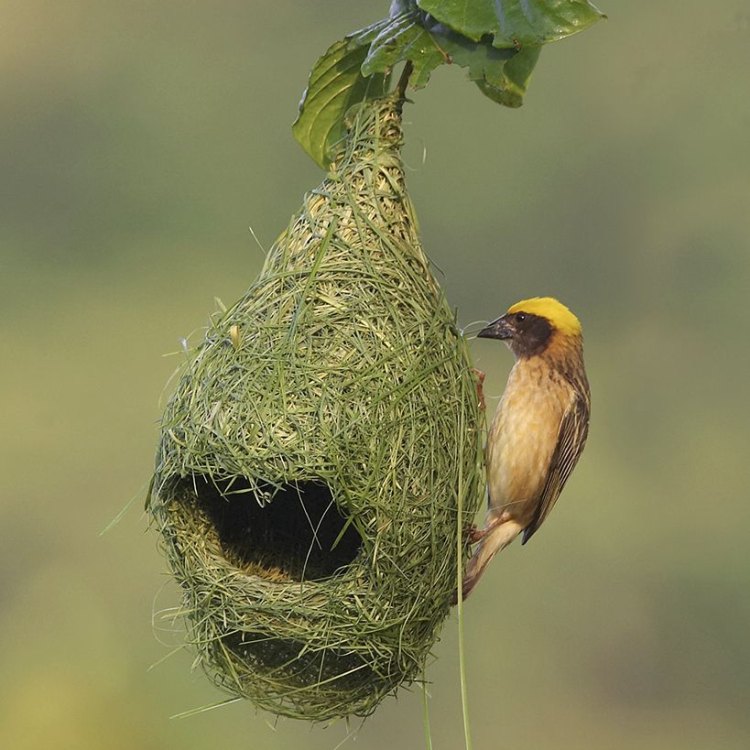
Ploceus philippinus
The Fascinating Baya Bird: Nature's Smallest Builder
When one thinks of birds, images of majestic eagles soaring through the sky or brightly colored parrots come to mind. However, there is one tiny yet remarkable bird that often goes unnoticed - the Baya bird. With its small size and unassuming demeanor, the Baya bird may not stand out at first glance, but a closer look reveals its unique features and behaviors that make it a fascinating species.The Baya bird, also known as the weaver bird, is a small passerine bird found in India, Nepal, and Southeast Asia PeaceOfAnimals.Com. It belongs to the Ploceidae family, which includes other weaver birds, such as the African masked weaver and the village weaver. Unlike its larger and colorful relatives, the Baya bird may not catch your eye, but its distinguishable features and intriguing behaviors make it a species worth exploring.
Size and Average Lifespan
One of the first distinctive features of the Baya bird is its petite size. Measuring only 15 cm in length, it is one of the smallest birds in its family. The males are slightly larger than females, but both share the same feathery brown coloring with white underparts and a black stripe on the head. Despite its diminutive size, the Baya bird has an impressive lifespan of 3-6 years.
Reproduction and Monogamous Behavior
One of the most fascinating aspects of the Baya bird's behavior is its reproductive habits. They are monogamous birds, meaning they mate for life and stay faithful to their partner. In the breeding season, usually from March to August, the males build elaborate and intricate nests to attract females Bullboxer. These nests are not ordinary structures; they are works of art that reflect the male's efforts to impress potential mates.
Delightful Songs and Calls
The Baya bird is not only a skilled builder, but it is also a gifted vocalist. They have complex and melodious songs that they use to communicate with their mates and mark their territory. Their calls are a combination of whistles, trills, and chatters, making them a delight to listen to in the wild.
Resident Migration Pattern
While some birds migrate long distances for food and breeding, the Baya bird is a resident species. They tend to stay in their designated habitats throughout the year, making them less prone to changes in weather and other external factors. This residence pattern also plays a crucial role in shaping their social groups.
Sociable Colonial Social Groups
Baya birds are social creatures and are often seen living and nesting in large groups. They form colonies that can range from a few dozen to several hundred birds. These colonies provide a sense of security against predators and allow them to have a strong social structure within their community.
Active and Extroverted Behavior
The Baya bird is an active and sociable species that are always on the move within their colonies. They engage in various activities, such as foraging for food, building nests, and communicating with each other. Their high energy levels and friendly nature make them a joy to watch in the wild.
Threats and Conservation Status
Unfortunately, like many other bird species, the Baya bird faces several threats to its survival. Habitat loss due to deforestation and urbanization is the most significant threat to their population. They are also captured for the pet trade, which further impacts their numbers in the wild. However, the species' current conservation status is classified as Least Concern by the International Union for Conservation of Nature (IUCN).
Impact on Ecosystem and Human Use
Despite its small size, the Baya bird plays a crucial role in its ecosystem. As they forage for food, they consume various seeds and fruits, which they then disperse elsewhere, aiding in plant growth and regeneration. Their nests also provide shelter for other species, such as insects and small rodents. However, their popularity as a pet bird among bird enthusiasts has led to increased demand for captive breeding, often at the cost of their wild populations.
The Long, Pointed Beak
One of the Baya bird's most distinctive physical features is its long, pointed beak. This beak is purpose-built for its various tasks, such as building nests, foraging, and cracking open seeds. Its sharp tip allows it to weave intricate patterns in the nests, making them stand out to potential mates.
Interesting Facts: The Male Baya Bird's Nest-Building Abilities
While both male and female Baya birds are skilled builders, it is the male's nest-building abilities that are truly remarkable. The male Baya bird spends several weeks weaving strands of grass and leaves to create a sturdy nest that can withstand harsh weather conditions. They choose a strategic location near the top of a tree to protect their nest from predators. The complex and elaborate nests serve as a visual cue for females, who then select a mate based on the quality of his nest-building skills.
Predators and Defenses
As with any small species, the Baya bird has its fair share of predators in the wild. Snakes and birds of prey, such as hawks and eagles, pose a significant threat to the Baya bird's survival. To defend against these predators, the Baya bird relies on its alertness and communication skills. They have various alarm calls that alert other members of their colony to potential danger.
In conclusion, despite its small size, the Baya bird is a unique and fascinating bird species with several interesting features and behaviors. Its monogamous and sociable nature, impressive nest-building abilities, and delightful songs make it a valuable addition to its ecosystem. However, their declining numbers due to human activities and the pet trade highlight the need to protect and preserve this species for years to come. So, next time you see a tiny bird darting around in the trees, take a closer look, it might just be the remarkable Baya bird, nature's smallest builder.
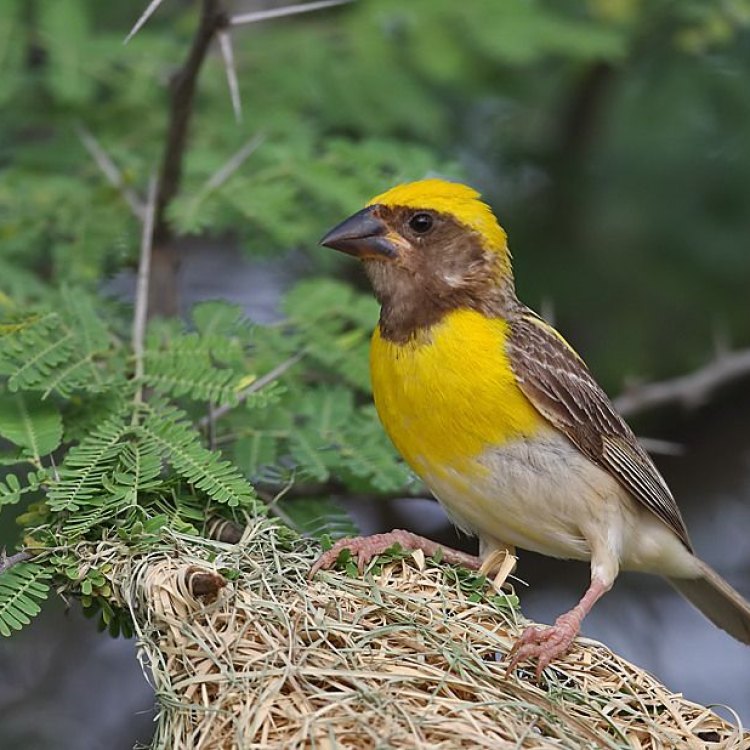
The Fascinating Baya: A Colorful Bird of the Indian Subcontinent
Disclaimer: The content provided is for informational purposes only. We cannot guarantee the accuracy of the information on this page 100%. All information provided here may change without prior notice.

